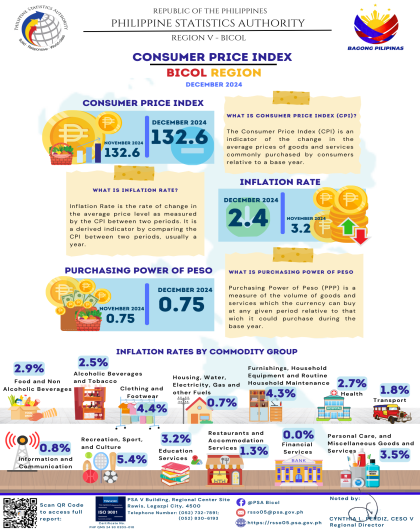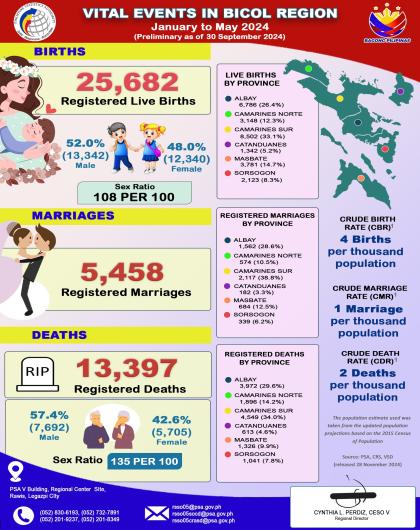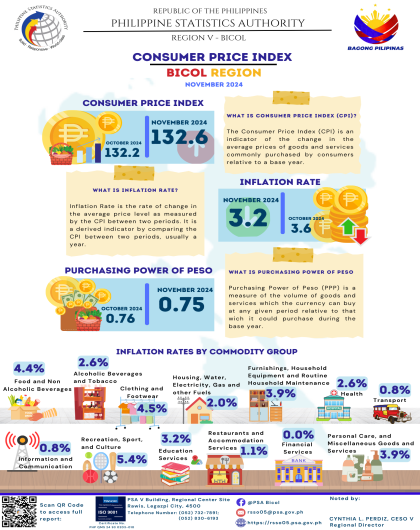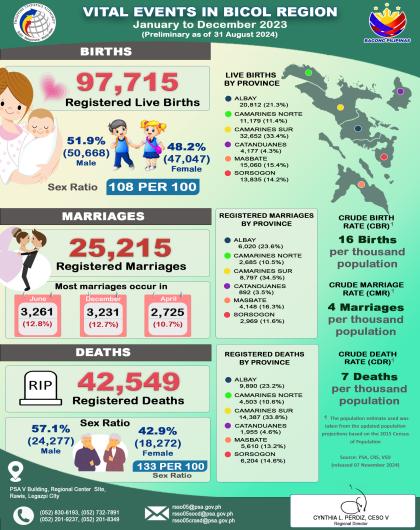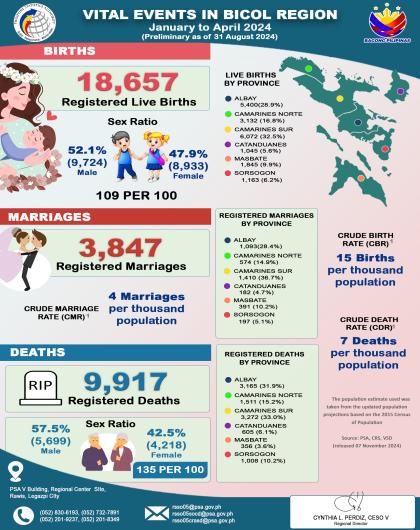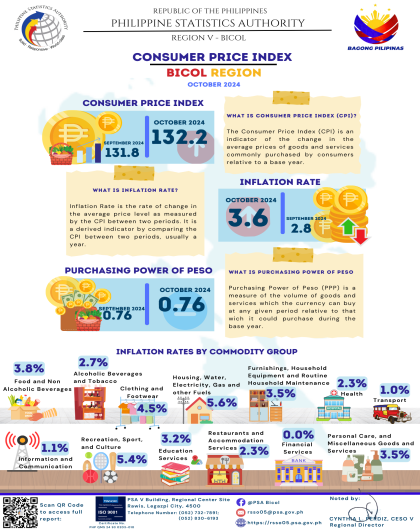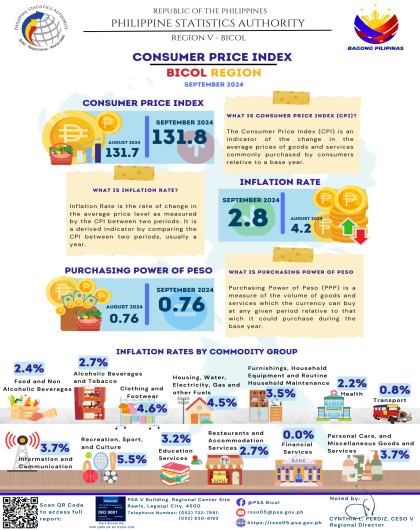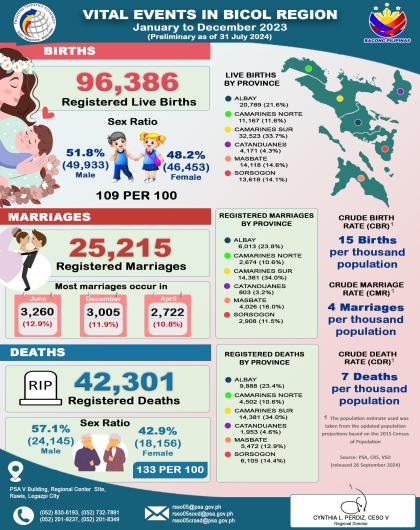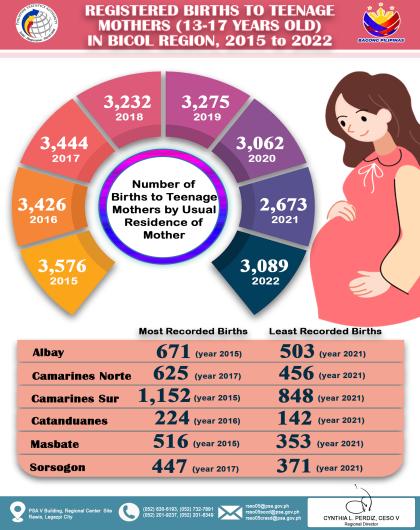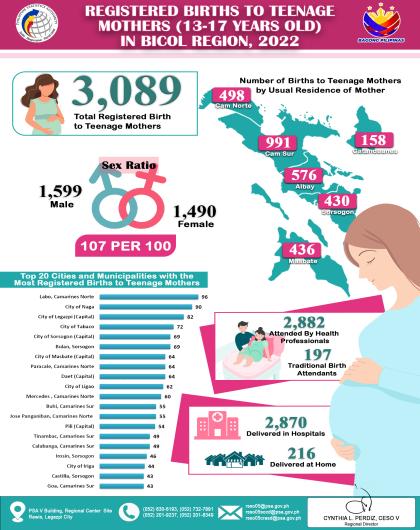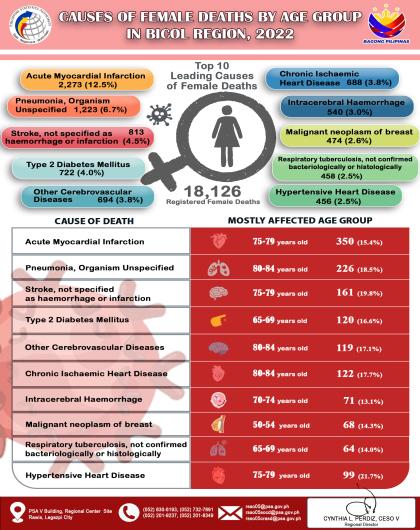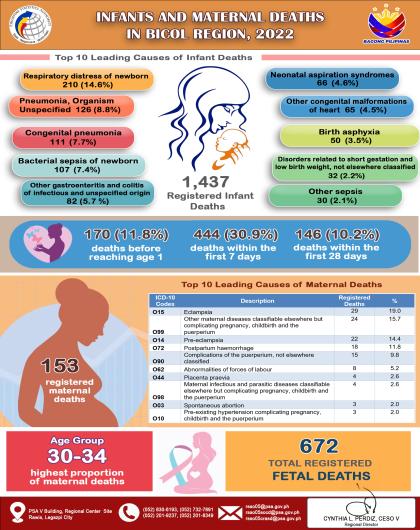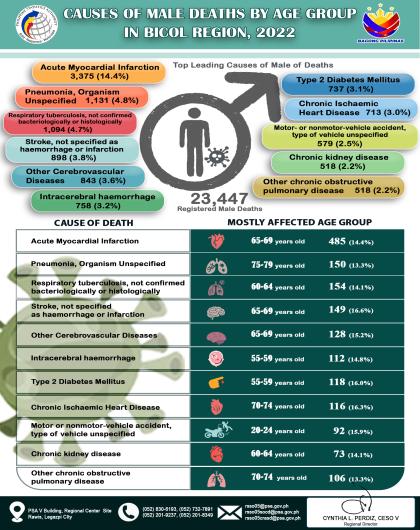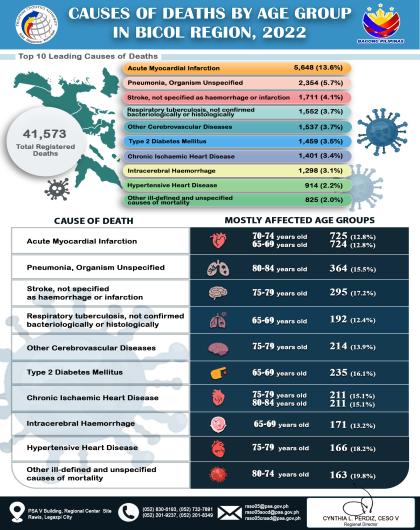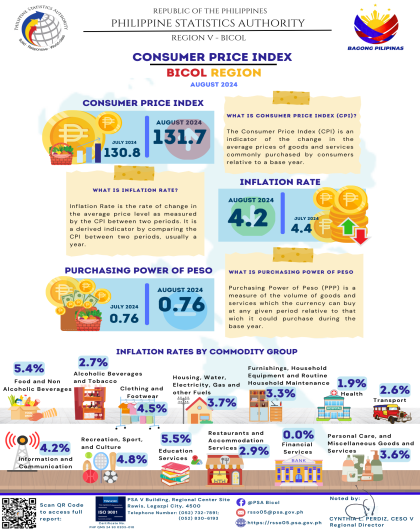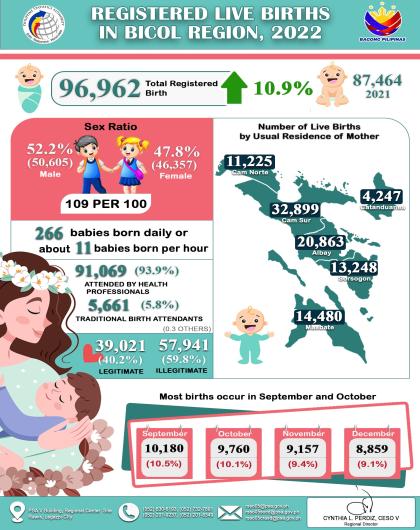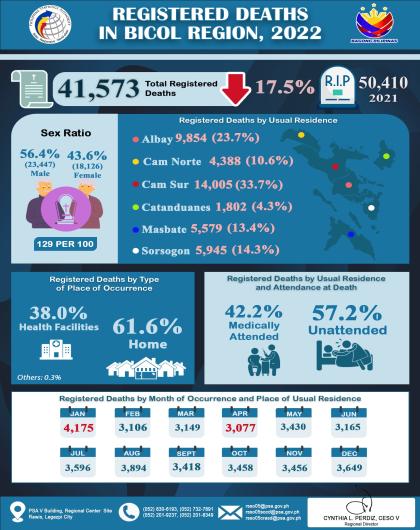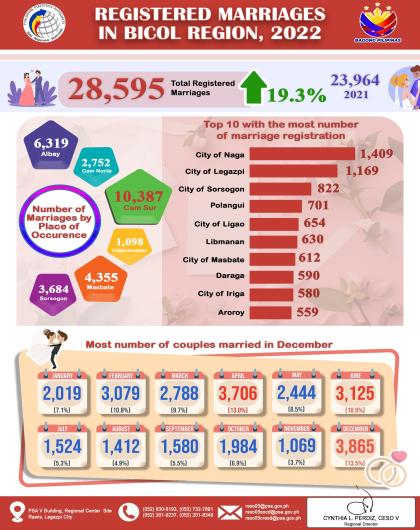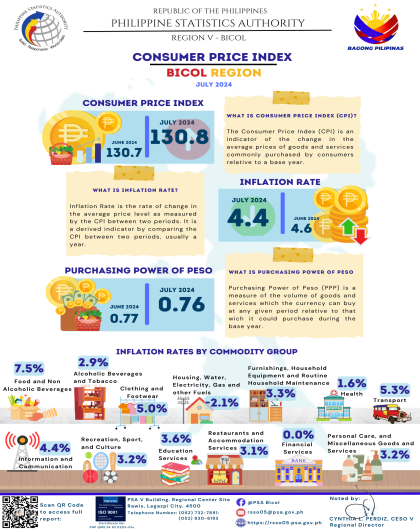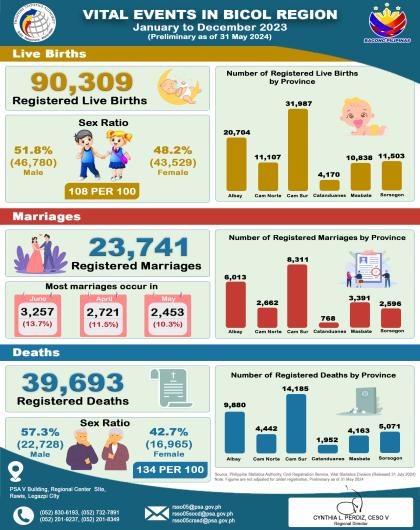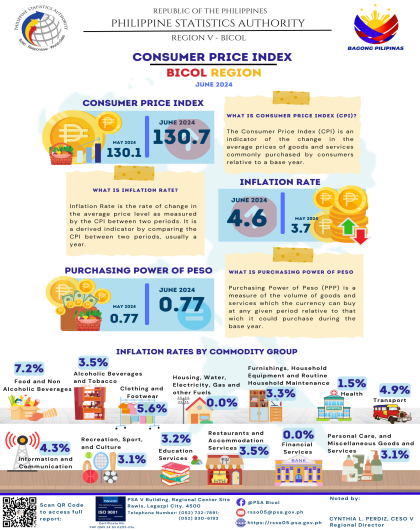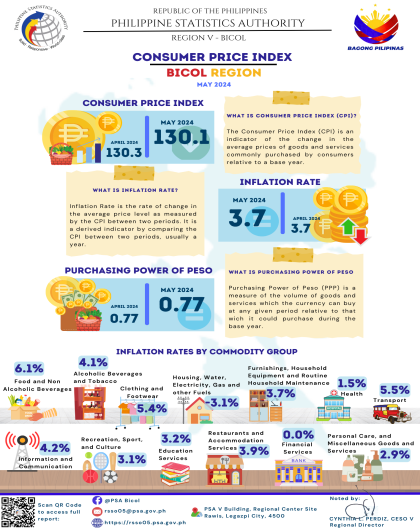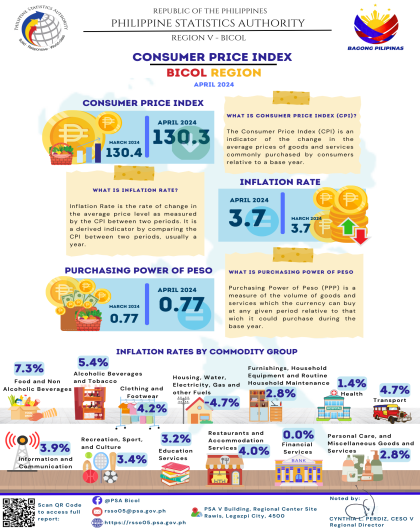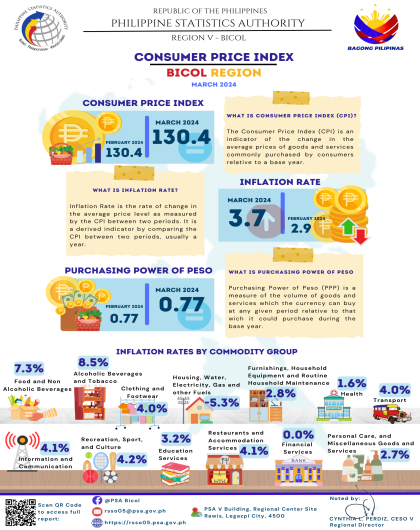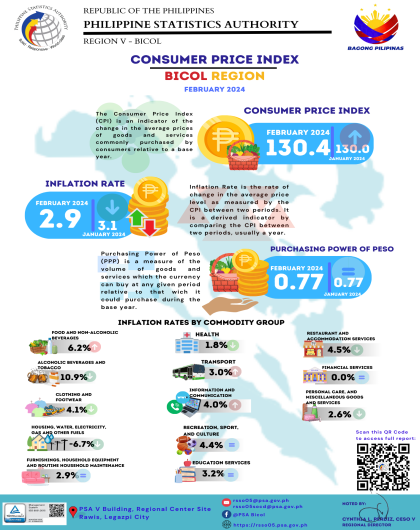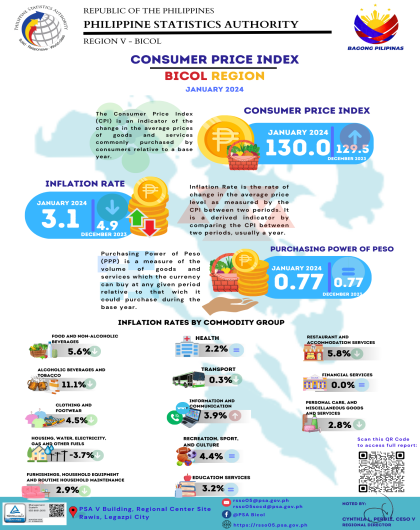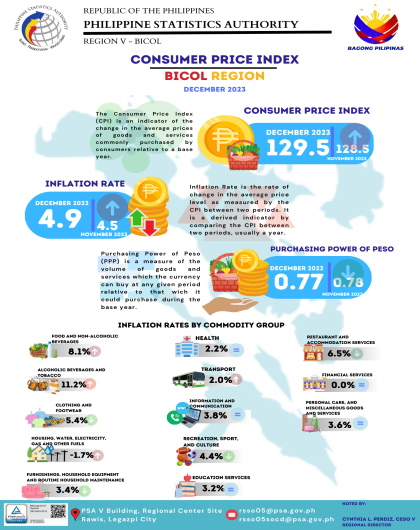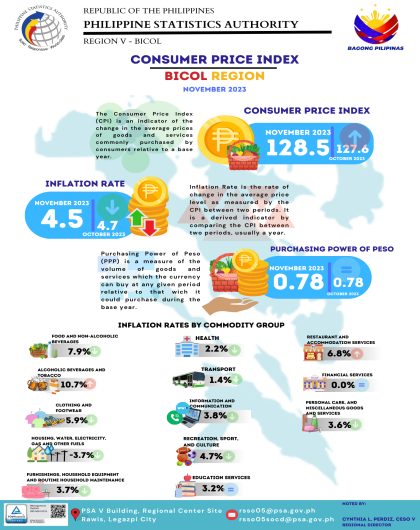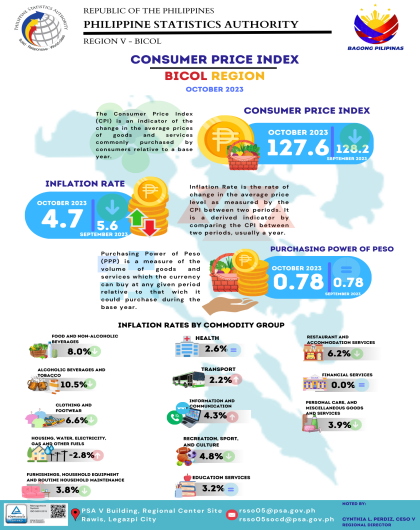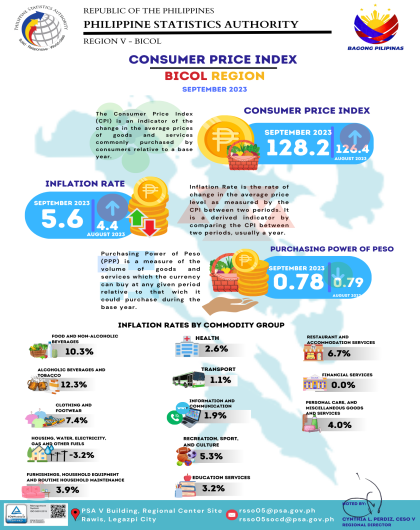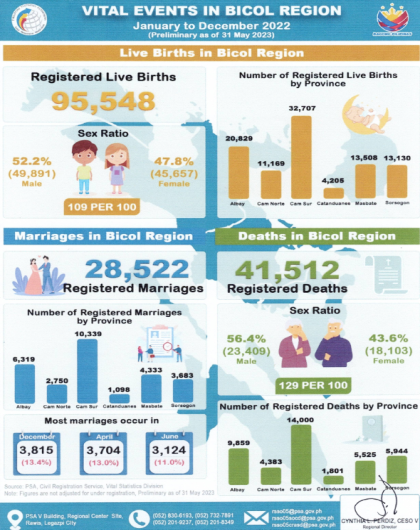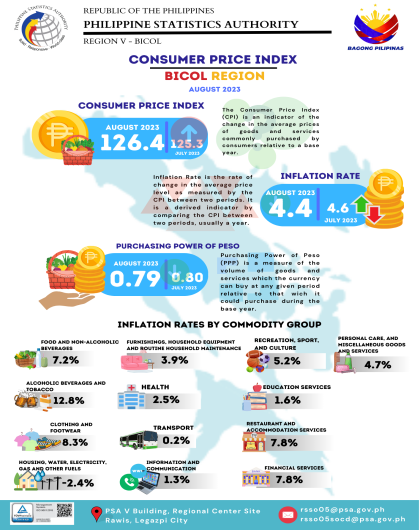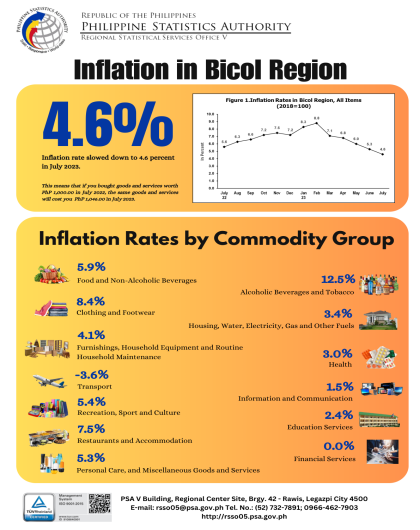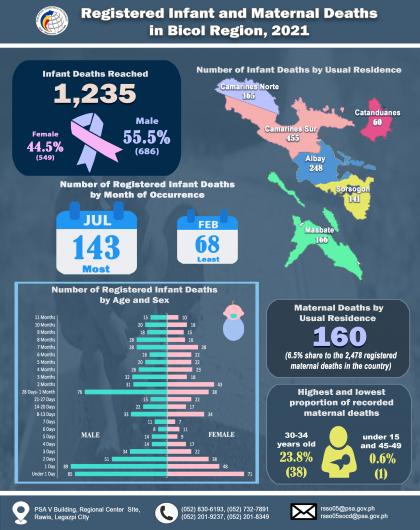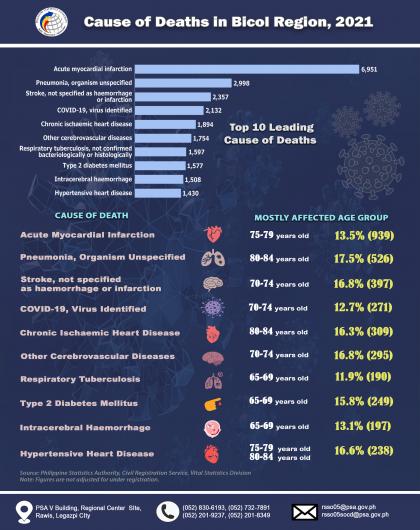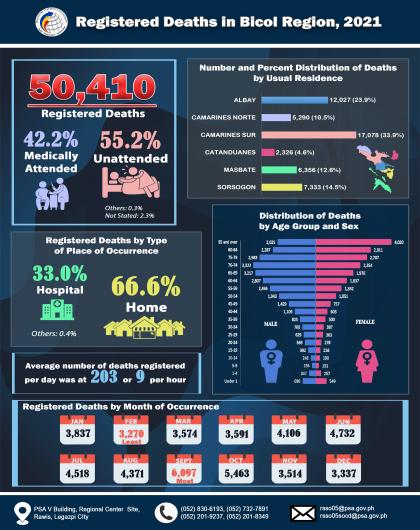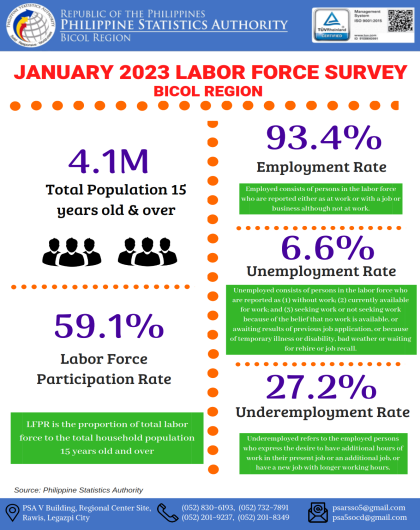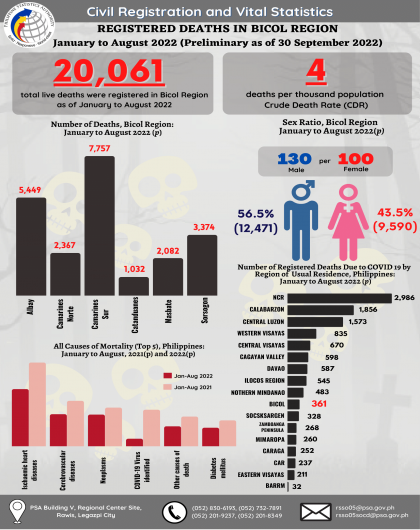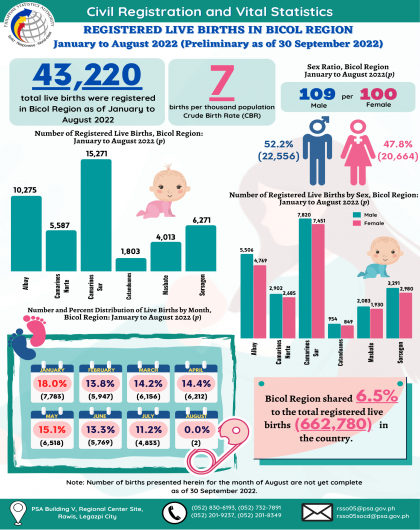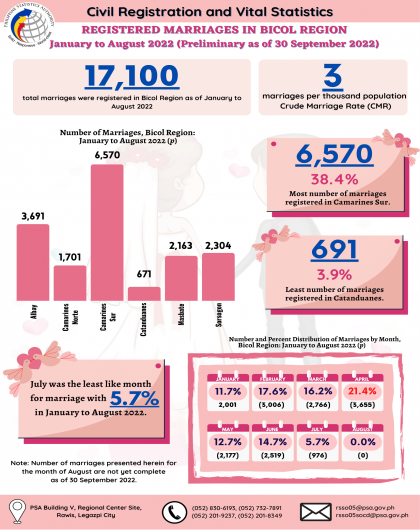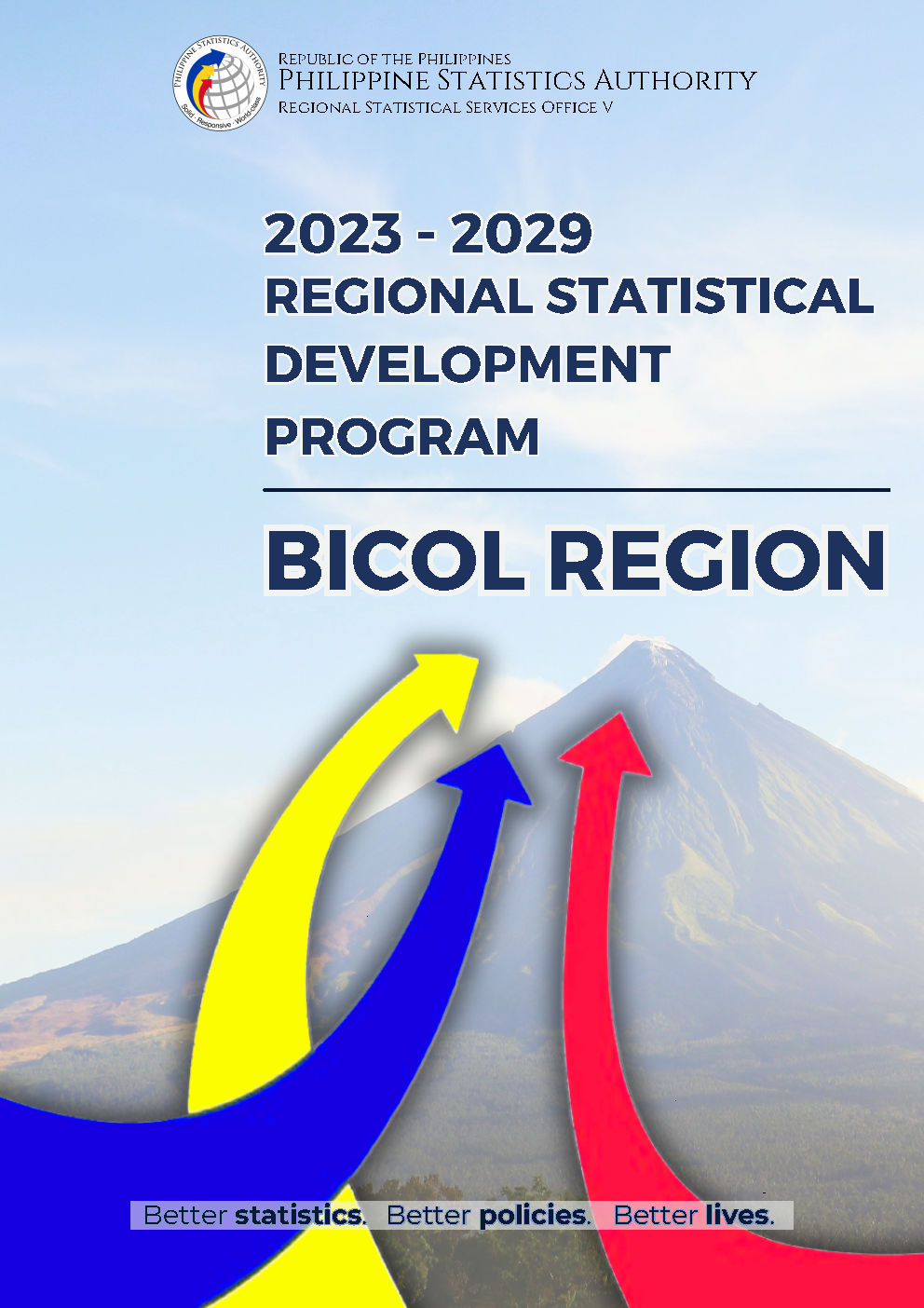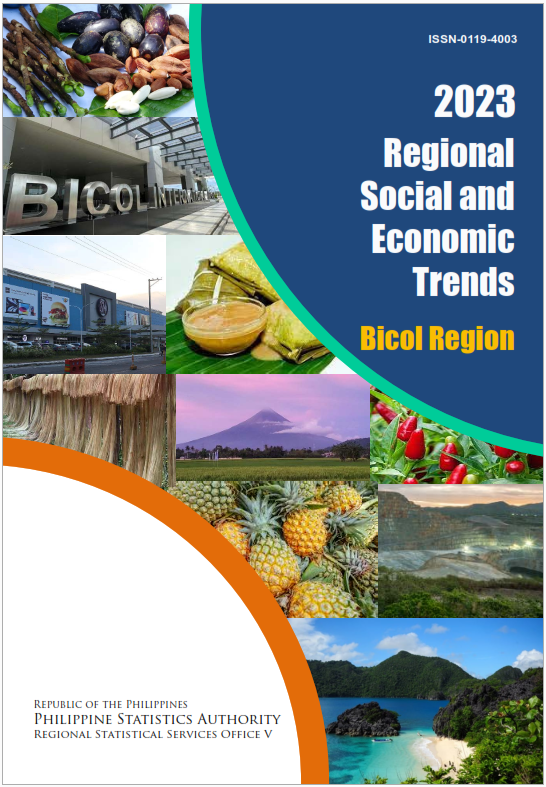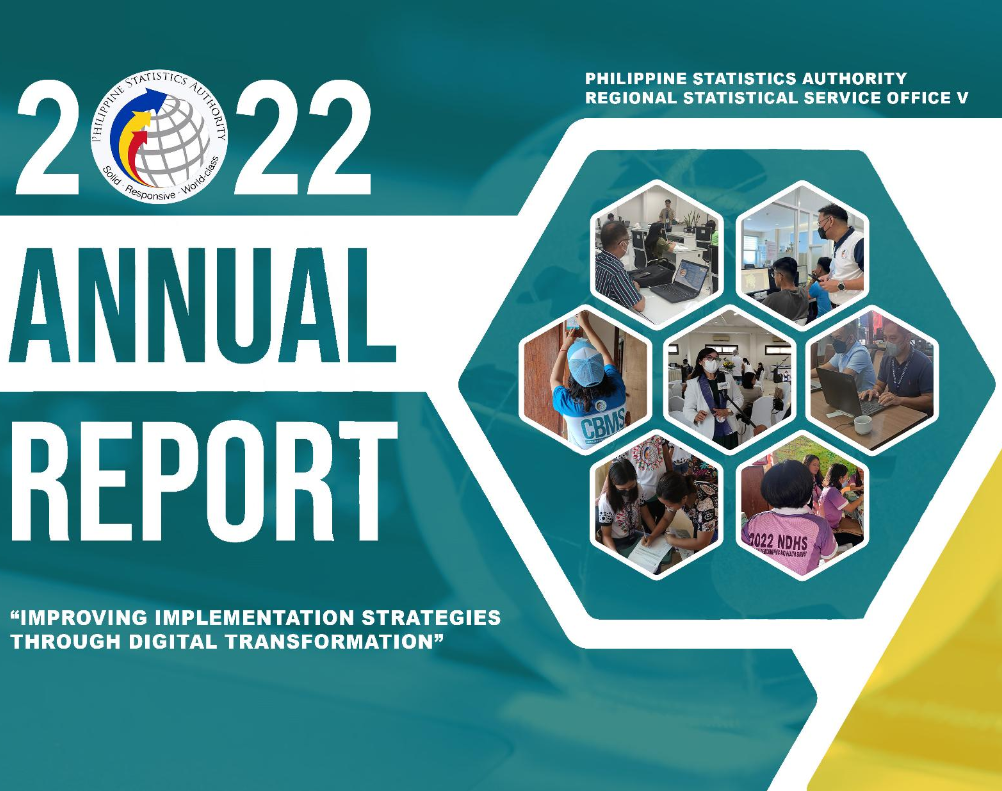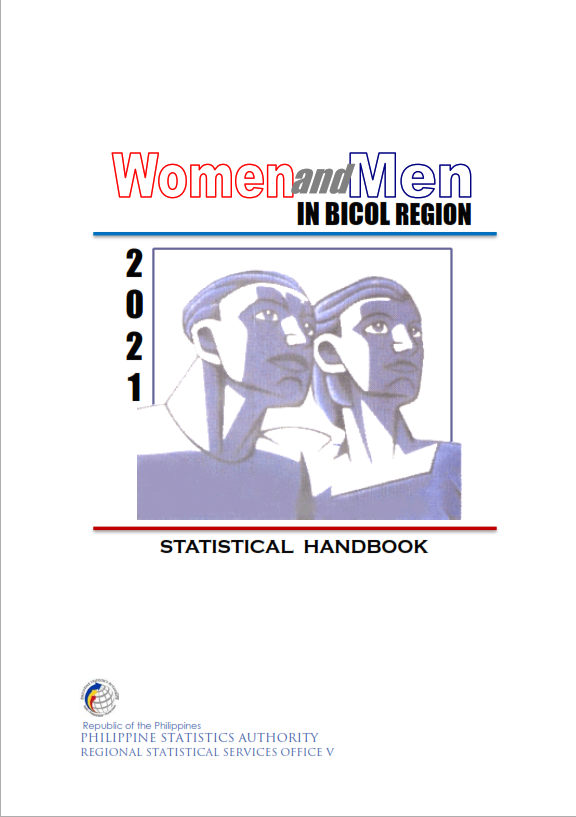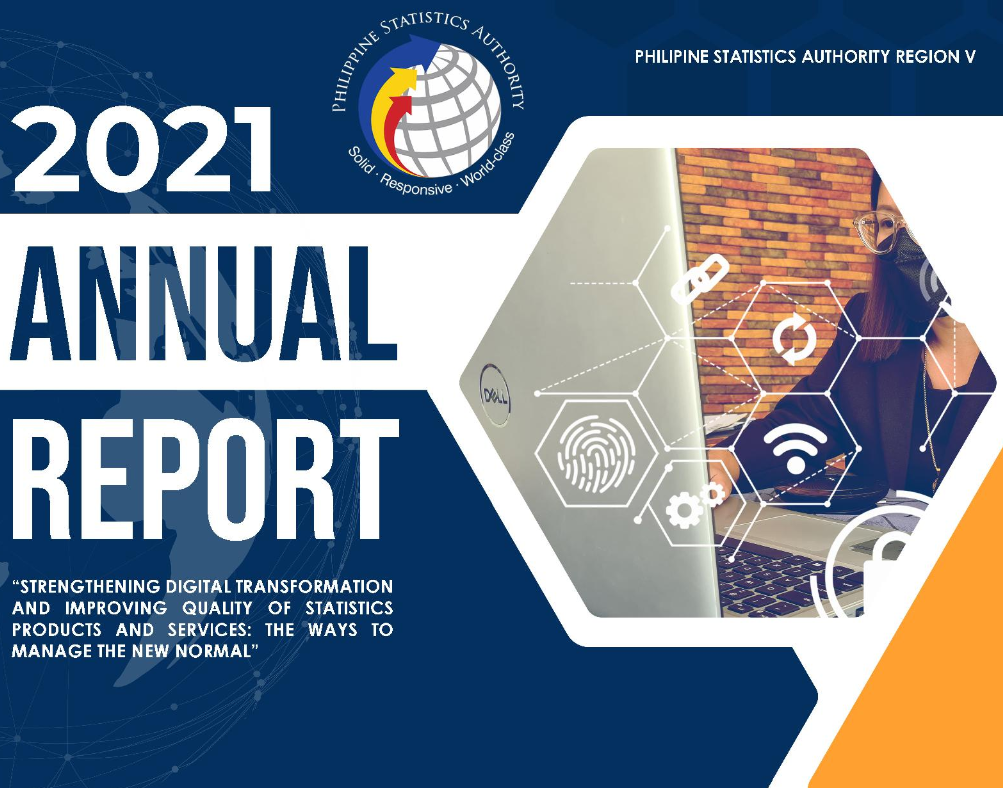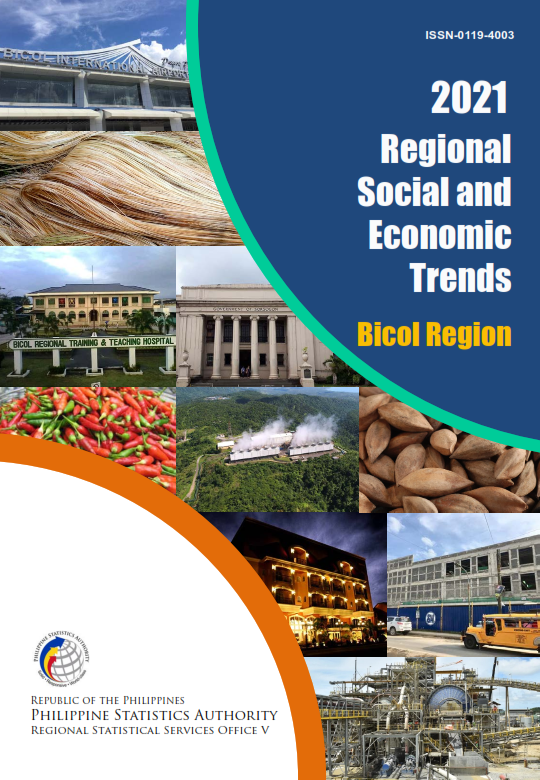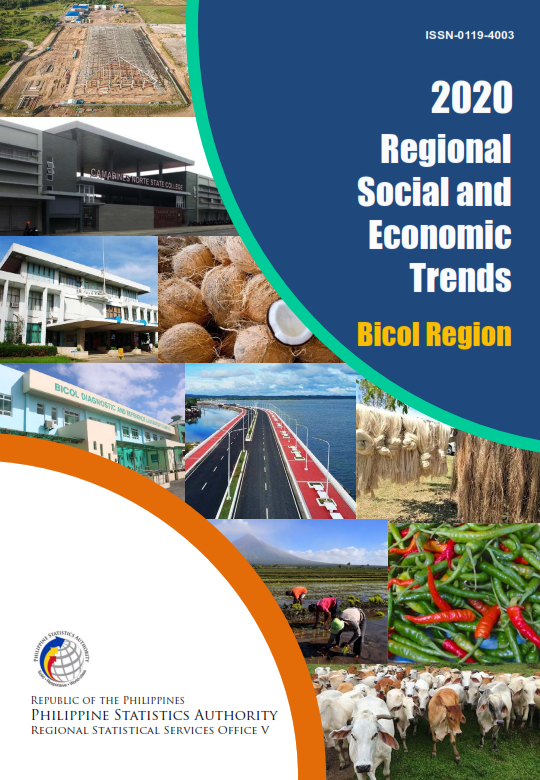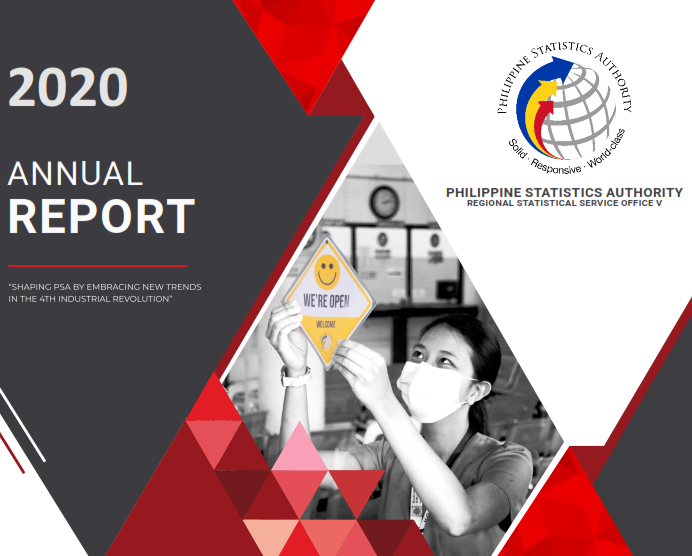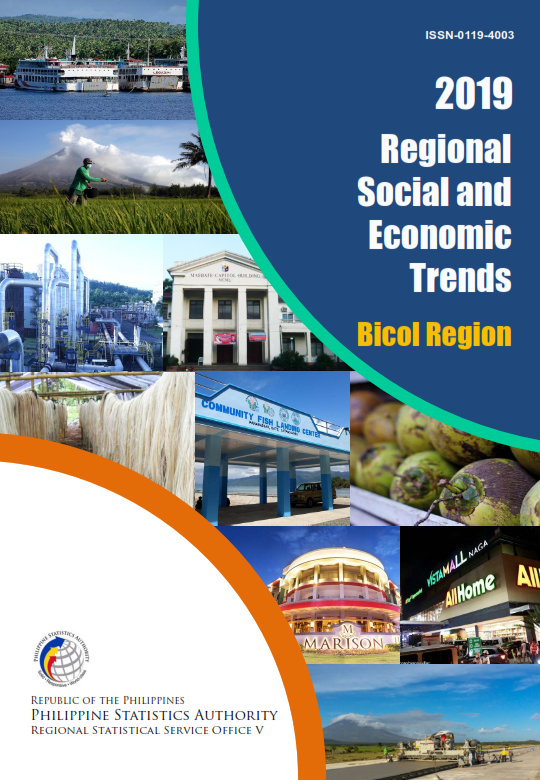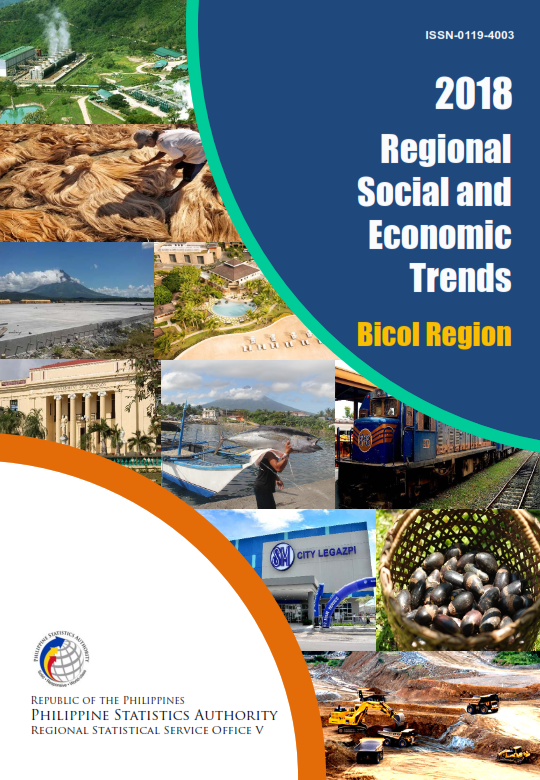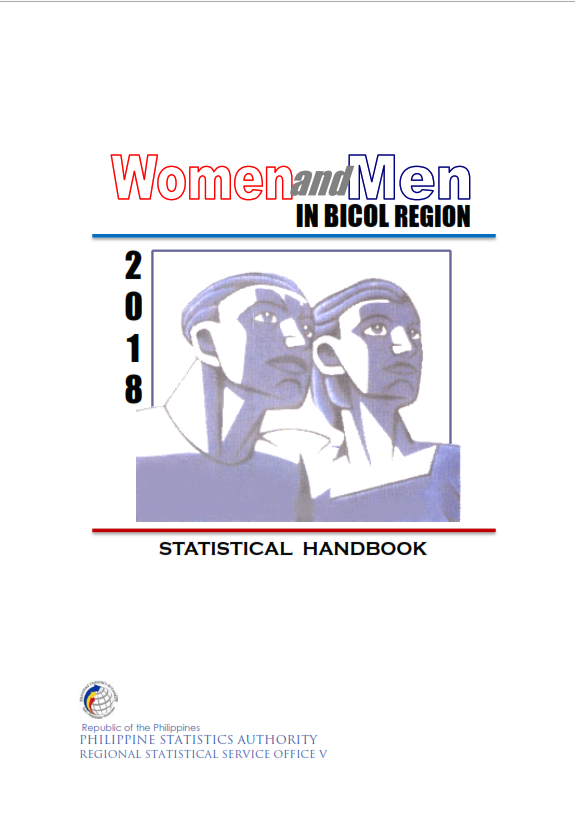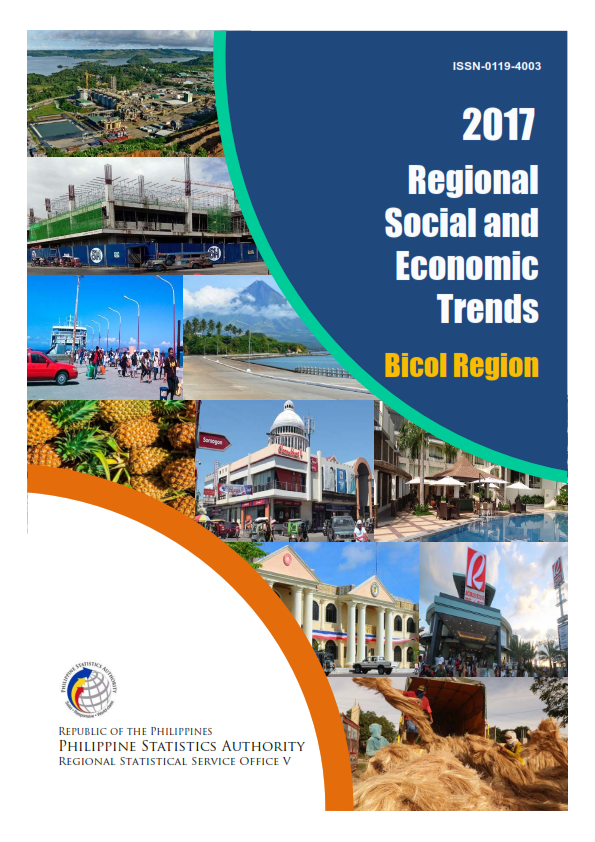The Gross Regional Domestic Product (GRDP) of Bicol Region dropped to 517.5 billion pesos in 2020 from 564.9 billion pesos in 2019, slightly lower than the 2018 GRDP of 522.0 billion pesos.
In 2020, the 8.4 percent decline translates to an economic loss of 47.5 billion pesos.
In the previous year, it grew by 8.2 percent.
Most of the industries posted a negative growth in 2020 except for information and communication, financial and insurance activities, public administration and defense; compulsory social activities, and human health and social work which posted a positive growth.
The main contributors to the decline were construction, transportation and storage, and other services.
Services remained to account the largest share in the region’s economy at 47.9 percent followed by Industry at 34.2 percent and Agriculture, Forestry and Fishing at 17.9 percent.
By expenditure item, Government final consumption expenditure (GFCE) which is the value of all types of output of general government to provide goods and service to the people for free or of insignificant prices, posted the only positive growth at 9.0 percent.
Household Final Consumption Expenditure (HFCE) which consists of resident households’ final consumption of goods or services like food, clothing and footwear, housing, transportation, restaurants and hotels, education, health, etc. declined by 8.5 percent, along with the Gross Capital Formation (GCF) which is measured by the total value of the gross fixed capital formation, changes in inventories and acquisitions less disposals of valuables for a unit or sector, at negative 29.2 percent; Exports of goods and services to the Rest of the World at negative 37.2 percent; and Imports of goods and services from the Rest of the World at negative 18.9 percent.
Household final consumption expenditure (HFCE) had the biggest share to the GRDE at 105.3 percent, followed by gross capital formation at 27.1 percent, and government final consumption expenditure (GFCE) at 20.2 percent.
Net exports of goods and services to the Rest of the World had a negative 10.0 percent share while Net exports of goods and services to the Rest of the Philippines had negative 42.6 percent share.
In terms of contribution to growth, Net exports to the Rest of the Philippines contributed at 7.7 percentage points, followed by net exports to the Rest of the World at 1.6 percentage points, and Government final consumption expenditure or GFCE contributed at 1.5 percentage points.
The growth, however, was pulled down by
Gross Capital formation or GCF at negative 10.2 percentage points,
followed by Household Final Consumption Expenditure or HFCE at negative 8.9 percentage points.
In 2020, per capita GRDP/GRDE of Bicol Region is 84,362 pesos which is lower by 9.3 percent from the 93,050 pesos per capita GRDP/GRDE in 2019.
Meanwhile, the per capita Household Final Consumption Expenditure (HFCE) of Bicol Region is 88,818 pesos in 2020. This is lower by 9.4 percent from the previous year’s per capita HFCE of 98,056 pesos.
Bicol Region ranked 10th in terms of economic performance in 2020. Bangsamoro Autonomous Region in Muslim Mindanao (BARMM) recorded the smallest contraction at -1.9 percent while Central Luzon had the biggest decline at -13.9 percent.
In terms of the structure of the regional economies, no region is predominantly agricultural.
One region is predominantly Industrial, that is, Region IV-A CALABARZON.
The rest of the regions are predominantly Services-based and Bicol Region is one of these regions.
In terms of per capita GRDP, Bicol Region posted a per capita GRDP/GRDE of 84,362 pesos and ranked second lowest among regions of the country.
Release Date :

